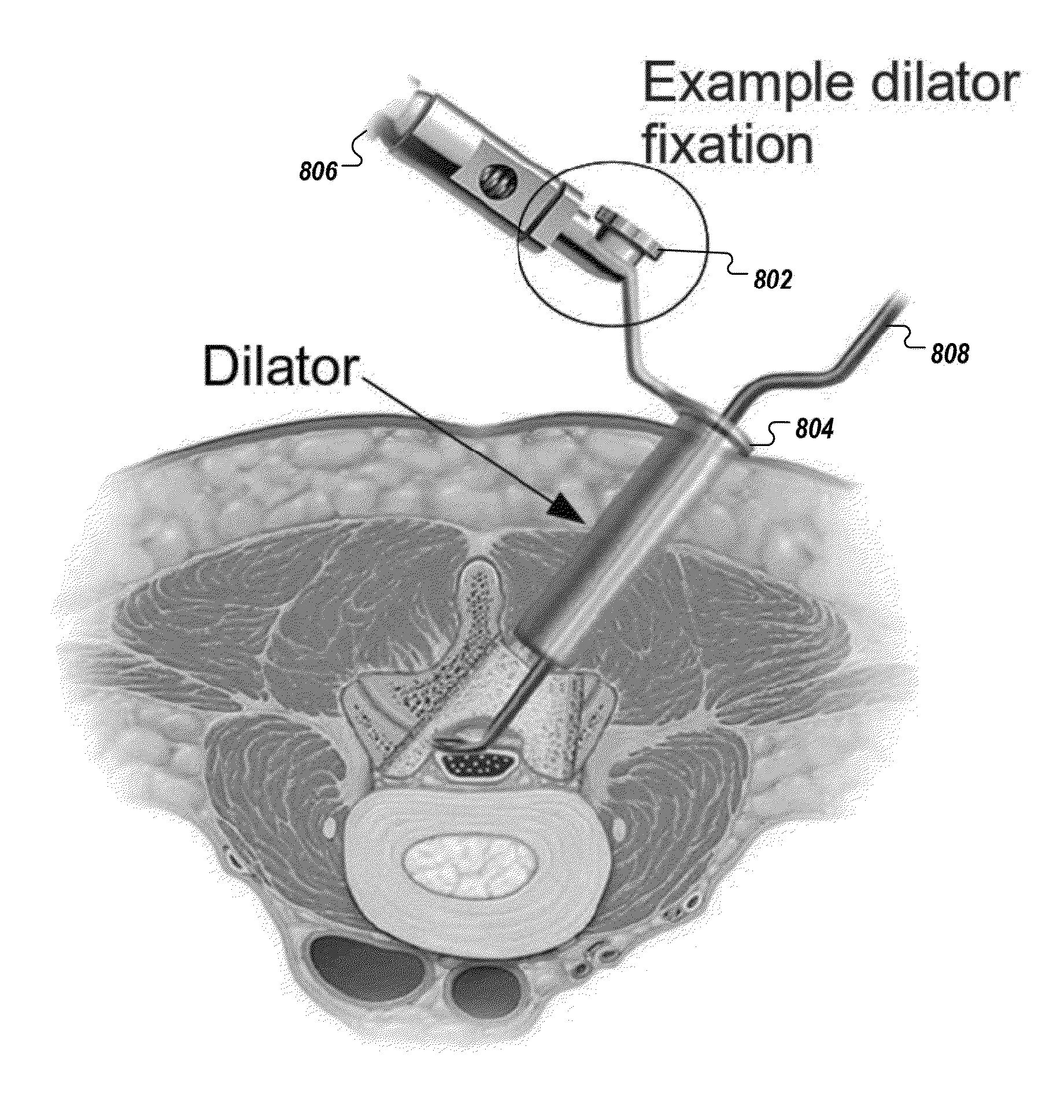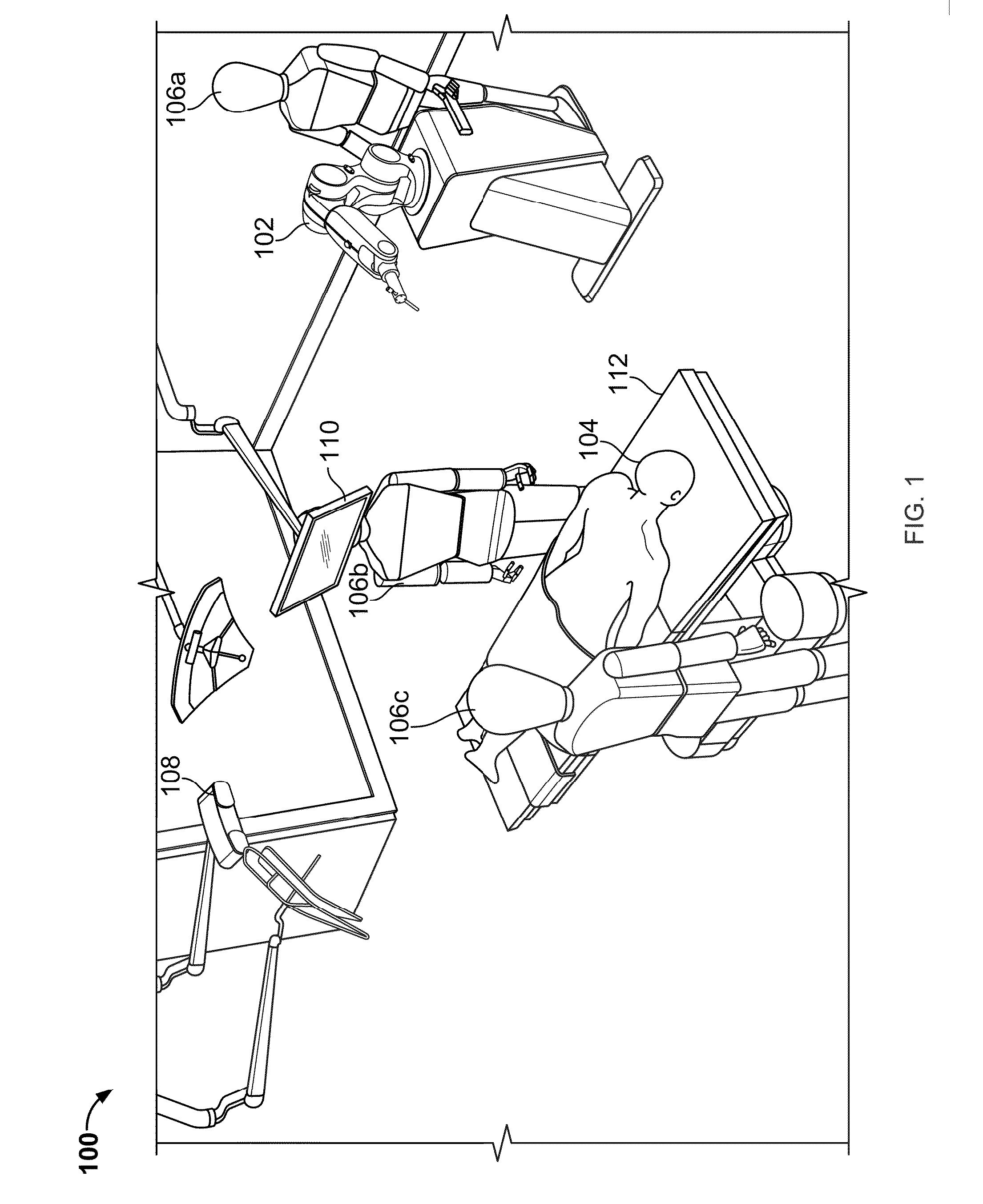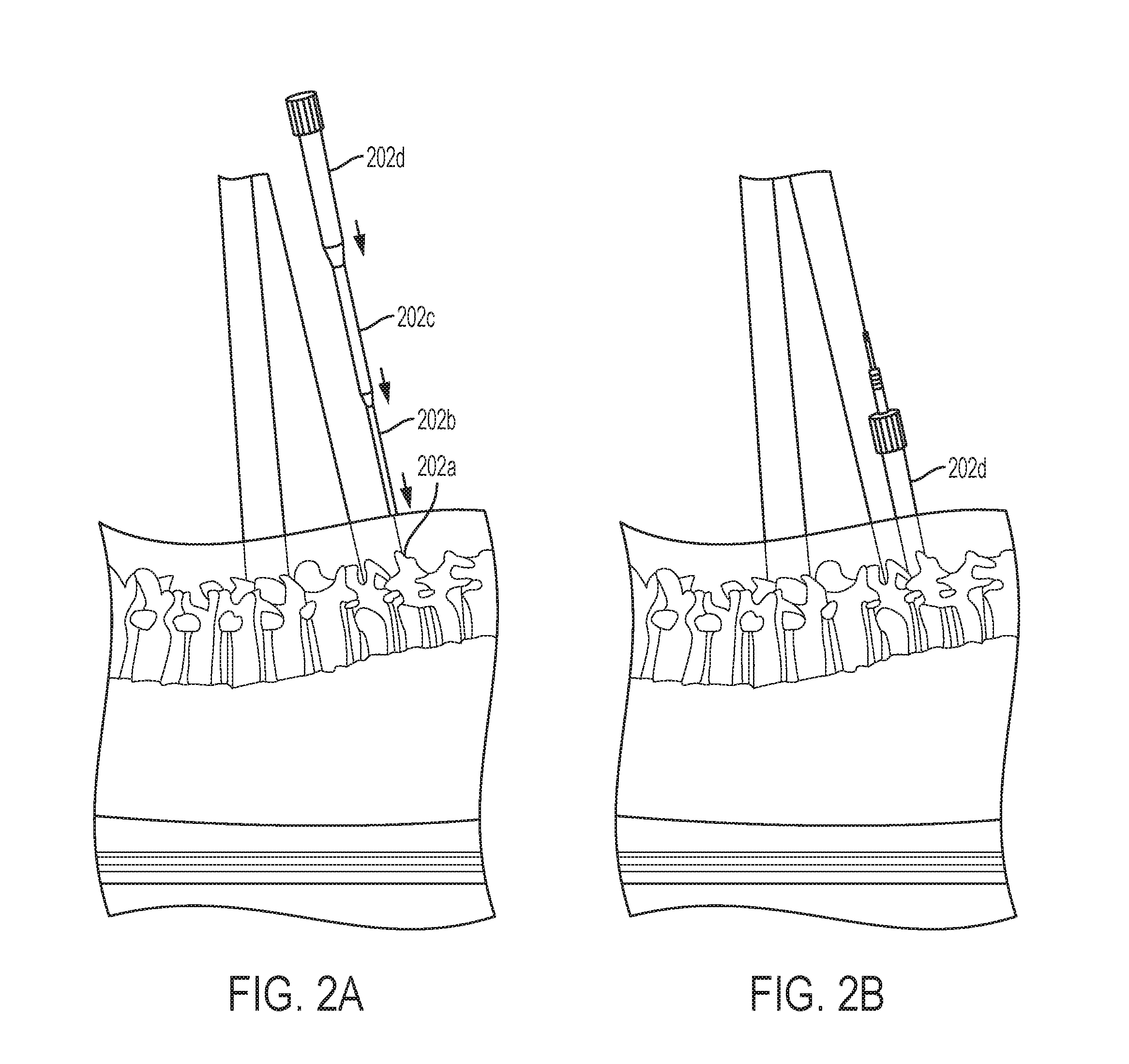Systems and methods for performing minimally invasive spinal surgery with a robotic surgical system using a percutaneous technique
robotic technology, applied in the field of systems and methods for performing minimally invasive spinal surgery with a robotic surgical system using a percutaneous technique, can solve the problems of limited acceptance of robotic systems by surgeons and hospitals, high cost of owning and maintaining current systems, and extensive preoperative surgical planning. , to achieve the effect of shortening the surgery time, improving precision and usability
- Summary
- Abstract
- Description
- Claims
- Application Information
AI Technical Summary
Benefits of technology
Problems solved by technology
Method used
Image
Examples
Embodiment Construction
[0085]FIG. 1 illustrates an example surgical robotic system in an operating room 100. In some implementations, one or more surgeons, surgical assistants, surgical technologists and / or other technicians, (106a-c) perform an operation on a patient 104 using a robotic-assisted surgical system. In certain embodiments, the operation may comprise insertion of one or more medical implants (e.g., screws) into the spine of a patient. The robotic system comprises an end effector which can be used to precisely define a trajectory (e.g., intraoperatively. For example, a surgeon may grab the end effector (e.g., a surgical instrument tube or a handle) and move the end effector such a desired trajectory is defined by the end effector (e.g., surgical instrument). Specifically, in the context of a surgical instrument guide, the surgeon may move the guide such that the trajectory along the length of the guide (e.g., the center of the guide) is in the desired position.
[0086]The trajectory can be displ...
PUM
 Login to View More
Login to View More Abstract
Description
Claims
Application Information
 Login to View More
Login to View More - R&D
- Intellectual Property
- Life Sciences
- Materials
- Tech Scout
- Unparalleled Data Quality
- Higher Quality Content
- 60% Fewer Hallucinations
Browse by: Latest US Patents, China's latest patents, Technical Efficacy Thesaurus, Application Domain, Technology Topic, Popular Technical Reports.
© 2025 PatSnap. All rights reserved.Legal|Privacy policy|Modern Slavery Act Transparency Statement|Sitemap|About US| Contact US: help@patsnap.com



